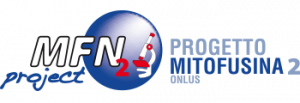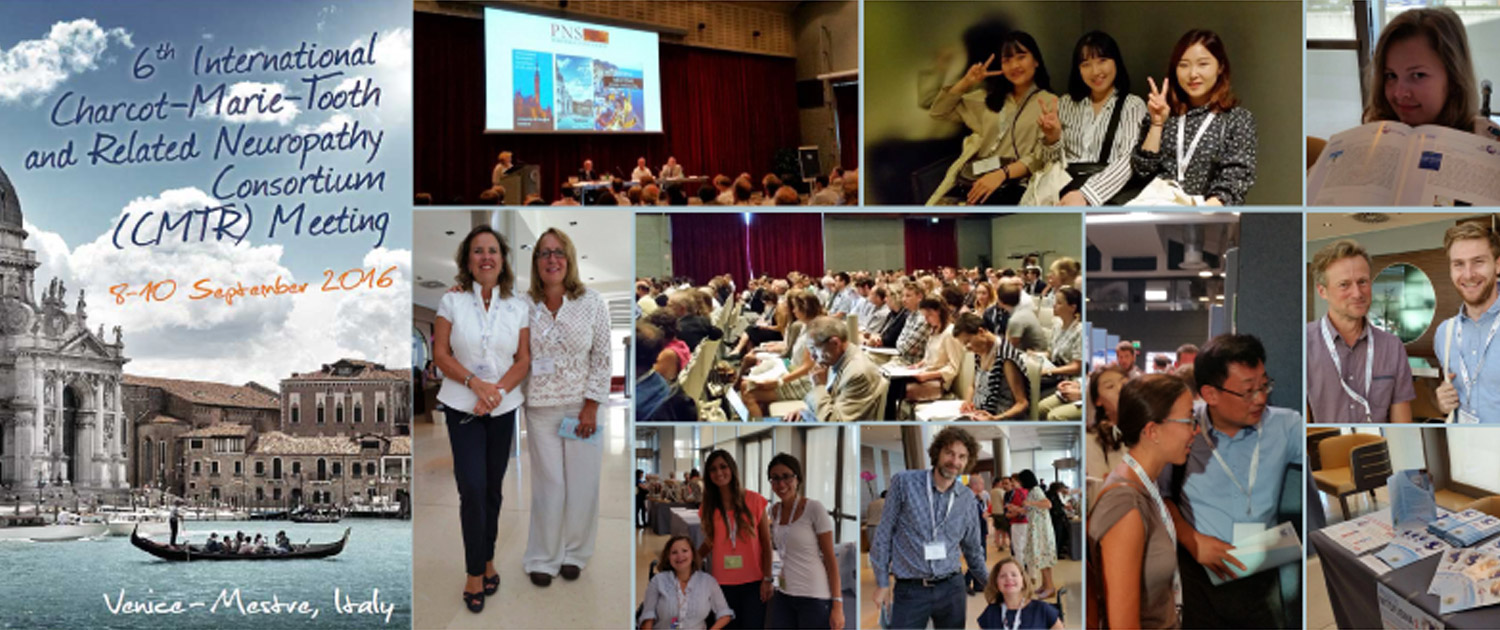6th International Charcot-Marie Tooth and Related Neuropathy Consortium (CMTR) Meeting
10 October 2016
Venice, 8-10 September 2016. We attended the International Scientific Conference on Charcot-Marie Tooth (CMT) disease organized by the Peripheral Nerve Society (PNS) with a special contributions from the italian committee : Dr Davide Pareyson (Milan), Prof. Gian Maria Fabrizi (Verona) and Prof. Angelo Schenone (Genoa).
It has been the most important scientific conference on CMT (the previous took place in Anversa in 2013) involving about 300 speakers of the highest level coming from all over the world: 222 studies introduced by the the world’s foremost authorities in this field in just three days of Conference.
Lots of topics concerning Charcot-Marie-Toot disease (which is due to over 1500 mutations identified so far in 90 genes) have been discussed. Particularly, researchers’ contributions have focused on many different subjects like : genetics (DNA sequencing, identification of new genes and mutations) ; pathogenesis and clinic (phenotypic variability, assessment methods of disease’s severity, supportive care as physiotherapy and sport). An important section has been dedicated to the therapeutical approaches and, with great plasure, we noticed that there are many research projects all over the world, i-n models in vitro and in vivo .
Venice,
An exhibition’s space has been given to Mitofusin 2 Project as a sponsor: a nice place where researchers could stop and talk with us about our association and our project. Many of them showed to be keen to cooperate with us in order to find new patients and exchange scientific information.
Dr Federica Rizzo and Dr Agnese Ramirez, of the research team of Dino Ferrari Center/ University of Milan/ IRCCS Ca’ Granda Ospedale Policlinico Foundation, introduced to the public the very important study results, recently published on the reknown scientific magazine Human Molecular Genetics, of their last therapeutical research project on Mitofusin 2 , which is supported by our association.
We were very excited to meet and talk to so many CMT experts (some of them attended the 1° International Conference about Mitofusin 2 we organized in Milan in 2014) . Even Prof. Zuchner ( Miami University ), who first described the mutations in the MFN2 gene as causative of CMT2A, said to be very interested in our activities.
All the researchers attending the Conference have claimed to be very optimistic about the advancement of CMT research, thanks to the growing number of research groups involved in this pathology and to the increasing quality of the studies carried out worldwide.
However we still need to be patient, because the research times are very long.
Our attention has been focused on recent research on Mitofusin 2 related on CMT type 2A: seven studies, including the one concerning our research project, have been introduced at the Conference.
GENETIC STUDIES
-
Candayan A, Istanbul, Turchia: Identification of mutations (c.T479G, p.V160G; cA2231G, p.E744G; c.C2119T, p.R707W; c.G526A, p.G176S) in Mitofusin2 gene in a cohort of four Turks patients .
-
Geroldi A, Genova, Italia: Identification of two double mutations (pThr129Pro, pLeu753fs; p.Asp194Glu, pGly325fs) in Mitofusin 2 gene in two patients CMT2A with early onset of the disease .
-
Rossor AM, Londra, UK: The study conducted by the INC-RDCRC Consortium was aimed at identifying the correlation between genotype and phenotype of 104 patients with mutations in MFN2 recruited in 13 centers, collecting data needed for future clinical trials.
PATHOGENESIS AND PATTERNS OF DISEASE
-
Zhou Y, Los Angeles, USA: The motor neuron-derived stem cells from patients CMT2A with mutations in MFN2 gene (T105M, H361Y) , show mitochondrial defects.
-
Rizzo F, Ramirez A, Milano, Italia: Motor neurons derived from stem cells of CMT2A patients show an overall reduction of mitochondrial content and an altered mitochondrial positioning within the cell. The reduction of the amount of mitochondria in CMT2A motor neurons is not the result of a reduced production of mitochondria, but more likely the specific form of autophagy of this organelle.
-
Bernard-Marissal N, Losanna, Svizzera: Characterization in mouse model MitoCharc1 (Eno-R94Q MFN2), created by Cartoni group in 2010, has been ameliorated, dysfunction in motor and sensory neurons have been identified.
-
Zhou, Los Angeles, USA: It has been generated a new transgenic mouse Thy1-MFN2-R94QMFN2 whose characterization is currently underway. At the time, the mouse shows defects sensory-motor and mitochondrial dysfunction.
Many other interesting issues for CMT patients, highly technical and addressed to scientists, were discussed.
Do not hesitate to contact us on any questions you might have about a specific topic.




